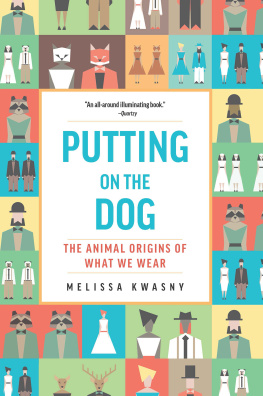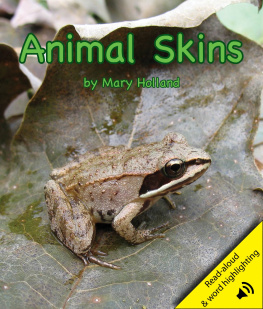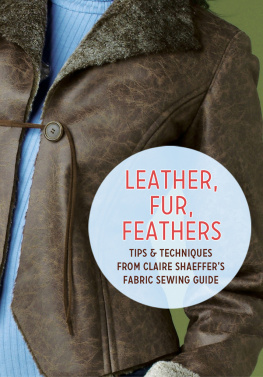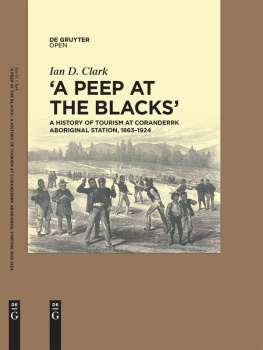
PUTTING ON THE DOG
The Animal Origins of What We Wear
MELISSA KWASNY
TRINITY UNIVERSITY PRESS
SAN ANTONIO, TEXAS
The publisher appreciates the support of the Kendeda
Fund in publishing this book.
Published by Trinity University Press
San Antonio, Texas 78212
Copyright 2019 by Melissa Kwasny
All rights reserved. No part of this book may be reproduced in any form or by any electronic or mechanical means, including information storage and retrieval systems, without permission in writing from the publisher.
Book design by BookMatters
Jacket design by Rebecca Lown
Cover image: iStock/DenisDubrovin
Author photo by Donna Goode Rogers
ISBN 978-1-59534-864-7 hardcover
ISBN 978-1-59534-865-4 ebook
Trinity University Press strives to produce its books using methods and materials in an environmentally sensitive manner. We favor working with manufacturers that practice sustainable management of all natural resources, produce paper using recycled stock, and manage forests with the best possible practices for people, biodiversity, and sustainability. The press is a member of the Green Press Initiative, a nonprofit program dedicated to supporting publishers in their efforts to reduce their impacts on endangered forests, climate change, and forest-dependent communities.
The paper used in this publication meets the minimum requirements of the American National Standard for Information SciencesPermanence of Paper for Printed Library Materials, ANSI 39.48-1992.
CIP data on file at the Library of Congress
23 22 21 20 19 | 5 4 3 2 1
Contents
Introduction
To be draped in the spun cocoons of silkworms, or warmed by piles of feathery down, to slip on sweaters, coats, hats, and gloves woven from the wool of sheep grazing in high pastures, to avoid rocks and thorns and cold by walking in the tanned and beaded skins of deer, elk, caribou, mooseor in spike heels made of alligator hide by Manolo Blahnikis to be human. Though we may clothe our cats or dogs, Homo sapiens is the only species that makes its own clothing. According to the Oxford English Dictionary, clothe means (1) to put clothes on, (2) to provide someone with clothes, and (3) to endow with particular qualities, as in You have been clothed with power from on high. Not included in these definitions, it seems to me, is a missing subject. Who is clothing whom? In many cases, throughout human history, that subject is an animal. As well, between the noun clothing and the verb clothe lies a whole universe of animal-human relations, of processes and trade, of traditional use and modern industrialization, of indigenous notions of reciprocity and contemporary ideas of sustainability. In effect, what we wear represents one of our most profound engagements with the natural world.
We are born nakedfeatherless and furless. may well have been animal fat, mixed with red ochre. We may have painted or scarred our bodies in imitation of the stripes, spots, and colors of the beasts surrounding us. Yet according to archaeologists, the making of complex clothingmaterial that is cut and sewn to fit the bodyis a surprisingly recent innovation, an event that occurred only in the last one hundred thousand years.
Clothing is obviously an important event in our evolutionary history, yet its actual invention is shrouded in mystery because it was made of animal and plant materials, which rot and disintegrate quickly. As the Encyclopedia of Human Evolution and Prehistory notes, have been found in Ethiopia and near Lake Turkana in Kenya and date to three million years ago, indicating that the manufacture of tools was practiced by hominids long before the emergence of Homo sapiens. But scrapers and blades could have been used to scavenge animal skins for their flesh or fat, not necessarily for our ancestors to be able to wear them.
Once piercing toolsawls and needlesappear, we can be certain that complex clothing manufacture is involved. People used awls to puncture hides, perhaps to run sinew through them for shoes or to tighten the edges of a cape. Awls, choppers, and axes have existed since the early Stone Age. , only began to surface in the archaeological record around forty thousand years ago; the oldest examples were found in the colder climates of western Europe, Siberia, and northern China.
Another form of indirect evidence for clothing manufacture comes from an interesting source: lice, one of our oldest tormentors. The human head louse, Pediculus humanus capitis, has apparently been with humanity since our beginnings. It is a single species that now occurs as two distinct ecological types: head lice and clothing lice. By sequencing the DNA from both types of lice found on contemporary humans around the globe, researchers believe they can determine when the split between the two occurred, and thus, the origins of clothing. In other words, once we lost our body hair, head lice were restricted to our heads; a different type of lice evolved only when we started wearing the hides of animals. and colleagues, in 2011, suggest that it might have been closer to 170,000 years ago: Our analysis suggests that the use of clothing likely originated with anatomically modern humans in Africa. (There is no proof of other species of archaic hominids wearing or not wearing hides or furs: because they are extinct, we can collect no living lice from them to analyze.)
to colonize more extreme latitudes than their archaic predecessors, and hence might have been a factor in the successful spread of modern humans out of Africa.
This is not to say that protection from cold and wind was the only function of even archaic clothing. Psychological functionsfor example, promoting modesty, avoiding shame, or displaying sexual attractivenessmust have been present even before the advent of complex clothing, as evidenced in the leaf aprons and loincloths depicted in artifacts and historical accounts of later hunter-gatherer societies. that have helped to maintain its continuing use up to the present.

In prehistoric Africa, elephants, rhinoceroses, and hippos splashed about in what is now desert. There were Cape buffalo and long-horned buffalo, horses, gazelles, wildebeests, and enormous herds of the elegantly named eland. Europe was home to whose 13,000-year-old skeleton was recently discovered at the bottom of a Mexican underwater cave, shared her crypt with saber-tooth tigers and a kind of extinct elephant called a gomphothere. Whether humans began fashioning gazelle capes to combat a cooling trend in Africa or picked up a needle to sew a wolf ruff onto a parka in any of the other cooler, and cooling, climates around the globe, it is certain that what we dressed ourselves in for millennia was a second skin.
The animals were here when we arrived. They were our predators and our prey. They were also our teachers and our kin. As philosopher and ecologist David Abram writes in Becoming Animal: An Earthly Cosmology, we must have made We fashioned beads out of their bones and perhaps painted whiskers onto our cheeks. Men in the Arctic Circle who wore walrus ivory labrets pierced through their lips probably did so for the same reason that contemporary women wear pearls around their necks: to borrow some of the power, mystery, and color of the animal world around us.
One can gain a sense of this tutelary relationship in many of the American Indian, Alaska Native, African, or Australian aboriginal stories that have been handed down orally for countless generations. that over the course of hundreds of generations, such participation with the enfolding earth [was] tuned so thoroughly by both the serendipities and adversities of this world, by its blessings and its poisons, its enlivening allies and its predatory powers, as to be wholly beyond the ken of any merely naive or sentimental approach to things.
Next page













